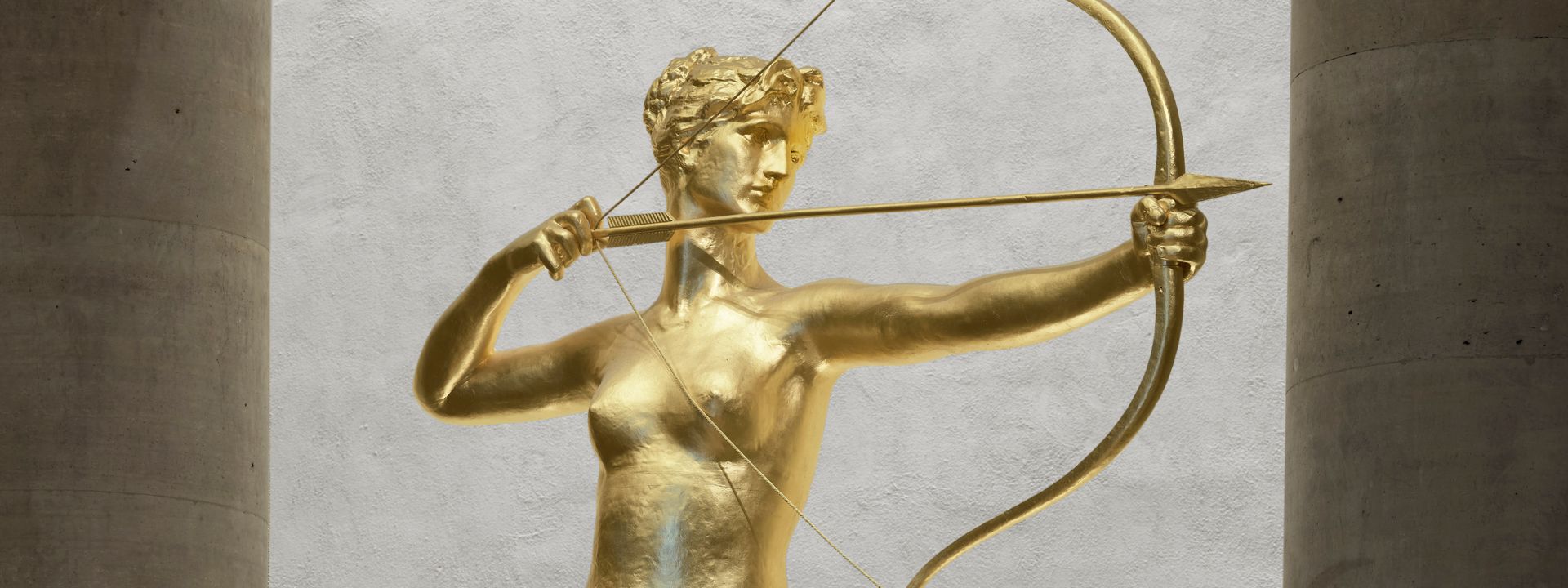Augustus Saint-Gaudens's Diana has adorned the top of the museum’s Great Stair Hall for more than eighty years. It was created in 1892–1893 as a gilded weather vane for the tower of New York’s Madison Square Garden, designed by Stanford White. The beloved sculpture underwent a remarkable transformation in 2013–2014 when conservators repaired and preserved its copper structure and restored its original gold leaf finish. The project was completed in July 2014.
Diana is arguably the best-known work of Saint-Gaudens, the most celebrated sculptor of America’s Gilded Age. It is his only nude female sculpture and one of only two gilded sculptures that he created for exterior sites, with the other being the Sherman Memorial in New York. When installed on Madison Square Garden’s tower, it turned and glittered 347 feet above the street at one of the highest points in Manhattan. Representing the grandeur and sophistication of the Gay Nineties, its brilliant gilded form caught the sun during the day and was illuminated at night by the city’s first electric floodlights. Although some were shocked by Diana’s brazen nudity, the goddess of the hunt made a fitting ornament for the sporting and entertainment arena below.
As the optimism of the Gilded Age faded into the twentieth century, Madison Square Garden fell into bankruptcy and deteriorated. Thirty years of weathering atop the tower had diminished Diana’s golden surface, and the sculpture was removed just prior to the building’s demolition in 1925. When Diana was adopted by the museum in 1932, it was cleaned and repaired—but not regilded—before it was installed in the grand staircase.
In 2013, the museum’s conservation staff began its restoration of Diana by analyzing and documenting her condition and performing tests to determine optimal cleaning and gilding techniques. They removed corrosion from the sculpture’s copper surfaces and coated them with a paint containing a corrosion inhibitor. One-hundred-eighty square feet of gold leaf was then meticulously applied. Finally, as Saint-Gaudens did not like the look of bright gold at eye level, the conservators matted the gilding for interior display.
